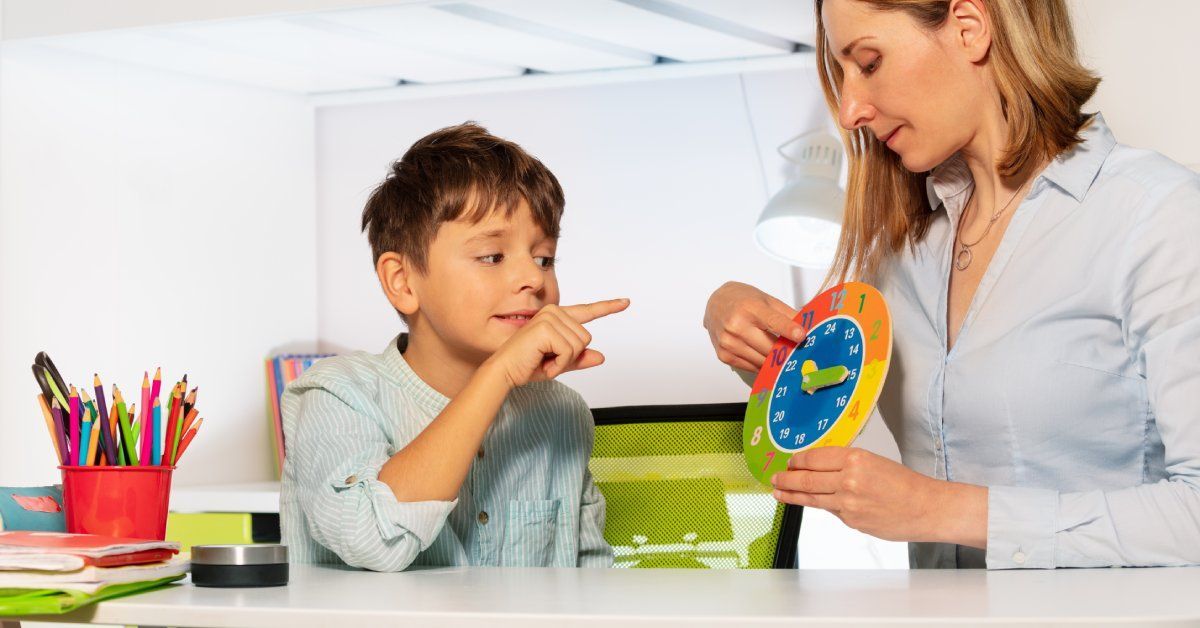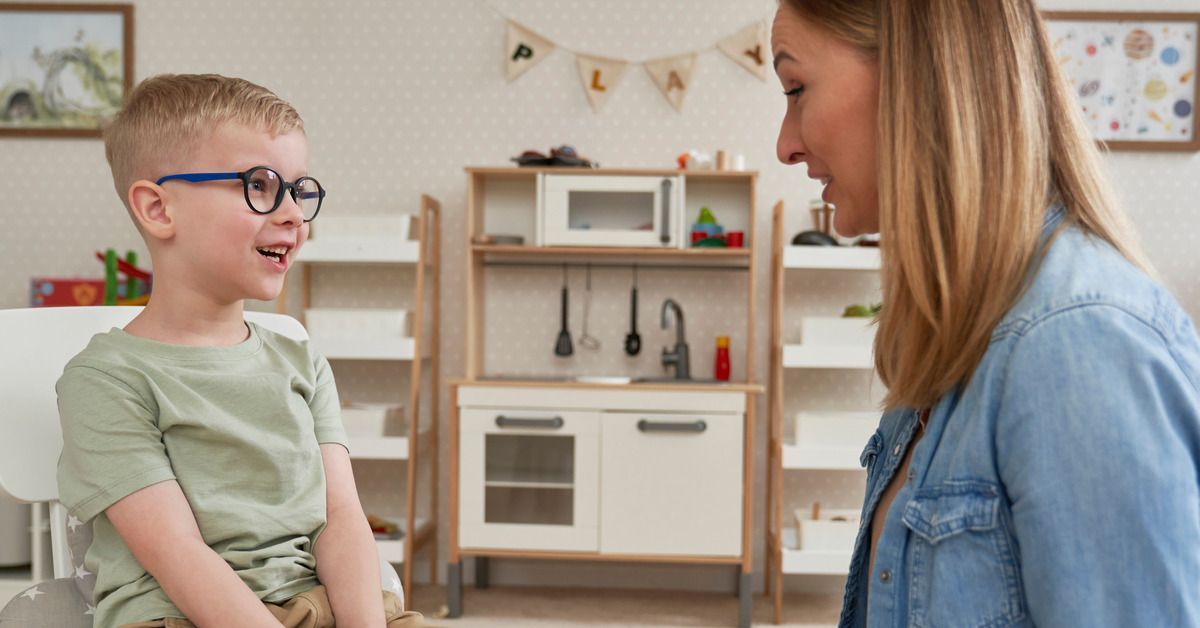Preparing Your Child for Their First ABA Therapy Session
The decision to start applied behavior analysis (ABA) therapy marks an important step toward supporting your child’s development and growth. While this process may feel overwhelming, understanding what to expect and how to prepare your child can turn apprehension into confidence.
Preparing your child for their first ABA therapy session not only eases anxiety but also ensures a positive introduction to this essential service. Setting expectations and planning in advance builds the foundation for a supportive, beneficial experience.
What Is ABA Therapy?
At its core, ABA therapy is a scientifically supported approach with the goal of fostering meaningful, positive change in behavior. ABA benefits children with autism by breaking down complex skills into manageable steps using encouragement and reinforcement to aid improvement. Therapists track progress methodically so children develop communication, social interactions, and life skills over time.
Opting for center-based ABA therapy provides a structured environment staffed with experienced professionals. Centers create a reliable setting with individualized attention tailored to your child’s unique needs. Here, children benefit from hands-on learning, consistent routines, and access to specialized tools.
Why Preparing Your Child Is Important

Starting anything new can raise uncertainty for children, especially when faced with unfamiliar people or places. Preparing your child for their first ABA therapy session provides time to address potential hesitations and reinforce a sense of security. Parents sometimes underestimate how impactful simple preparations can be in soothing nerves and fostering excitement for new experiences.
Reducing anxiety is crucial for a productive first session. Clear communication helps your child understand this transition while focusing on the positive outcomes they can anticipate. A little preparation ensures the initial meeting is relaxed and purposeful, enabling the child to form early bonds with their therapist.
Equally important is the ability to establish positivity. When children associate therapy with kindness, encouragement, and consistency, their willingness to engage increases. Creating affirmative feelings early paves the way for smoother adjustments and long-term collaboration.
Steps To Prepare Your Child for ABA Therapy
Introduce the Concept of Therapy in Simple Terms
To help your child feel more comfortable with ABA therapy, explain it in simple, age-appropriate language. You don’t need to dive into technical details; instead, focus on the exciting aspects. Let your child know that therapy is a place where they can learn new things with the support of friendly guides.
Use comparisons they can relate to, like, “It’s like going to a new school where nice teachers help you with fun activities.” This will spark their curiosity and create a sense of comfort rather than overwhelming them with unfamiliar concepts.
Provide an Overview of What To Expect
Offering an overview of what will happen during therapy sets clear expectations and calms worries your child might have. Let them know that sessions typically involve learning through fun, interactive games and that there will be breaks for relaxation or snacks. Explaining the routine helps your child understand what’s coming, which makes it easier for them to adjust to the changes in their daily schedule.
Visit the Therapy Center Beforehand
If possible, visiting the therapy center before the first session can be a huge help in reducing anxiety. Take your child on a tour of the facility, allowing them to explore the space and meet the therapists in a relaxed setting. By familiarizing them with the environment, you remove some of the mystery and help your child feel more comfortable in the new surroundings.
Engage in Role-Playing or Rehearse Tasks
Engaging in role-playing or practicing simple tasks ahead of time can help your child get a feel for what their sessions will be like. You can practice taking turns, following simple instructions, or transitioning between different activities, which are all common elements of an ABA therapy session.
Even practicing sitting in a chair while explaining that part of the therapy will help create a sense of predictability for your child. These small rehearsals give them a clear idea of what to expect and build confidence in their ability to handle the new experience.
What Parents Can Expect in the First ABA Therapy Session
A child’s first therapy session introduces them to the therapists who will work with them over the coming weeks and months. These professionals, trained extensively in ABA strategies, seek to observe and understand your child’s personality, preferences, and challenges. Building a positive rapport is the priority during this session.
The session itself is often designed to make children feel at ease, with activities tailored to maintain engagement. Therapists use these initial interactions to learn about your child’s likes and dislikes. While the session lays the groundwork for what’s to come, don’t be surprised if your child has moments of hesitation or doesn’t yet fully engage; therapy adapts to individual needs over time.
Parental involvement during the first session fosters the child’s sense of security. Your calm presence nearby provides reassurance. Observe interactions and communicate with the therapists throughout the session. Maintaining positive body language and encouraging smiles makes this new experience safe and beneficial.
Addressing Common Concerns
It’s natural for parents to worry if their child shows resistance or hesitance during early sessions. Therapists anticipate these situations and rely on positive reinforcement to help children adjust and build comfort at their own pace.
Another concern often revolves around how long it takes to see progress. ABA therapy is intentional and measured, focusing on cumulative growth rather than quick milestones. Trust the individualized plan tailored to your child and their specific goals.
Supporting ABA Therapy at Home

Therapy doesn’t stop when the session ends. Parents play a vital role by reinforcing skills learned during sessions within their daily routines. Practicing these lessons regularly transforms therapy into something relatable, offering consistent opportunities for progress.
Celebrating each small success keeps the momentum strong. Progress may feel slow initially, but it’s important to highlight achievements and praise your child’s effort. These celebrations motivate your child to continue participating energetically in therapy.
Equally significant is staying engaged with the therapy team. Open communication lets you provide feedback, share observations from home, and ask questions. Collaboration ensures the therapy plan evolves along with your child’s needs, providing maximum benefit.
Building Confidence Together
Starting ABA therapy is a milestone for children and their families. While the process may initially feel daunting, preparation breaks it into manageable steps to calm anxiety and encourage success. From learning what to expect to creating familiarity with the therapy center, parents play an indispensable role in guiding their child forward in this new chapter.
Remember, you’re not alone in this. The therapy team shares the same goal of helping your child thrive, offering their expertise and support every step of the way. By taking the time to prepare, you can build a foundation of security and trust that makes all the difference. Trust the process—your child’s bright future awaits.







